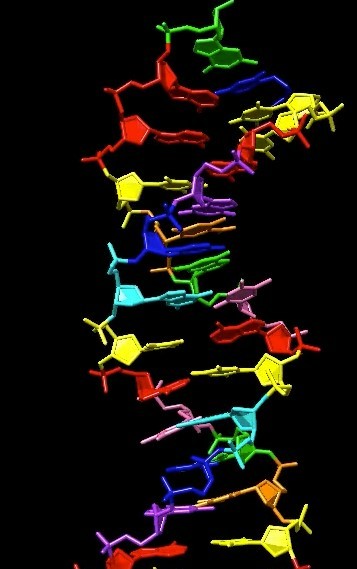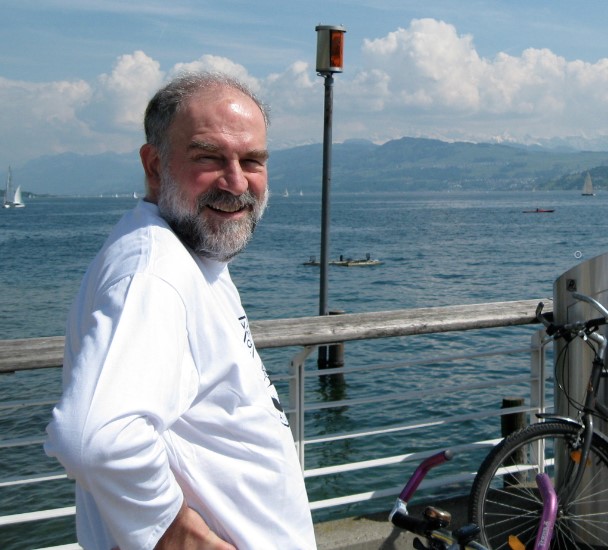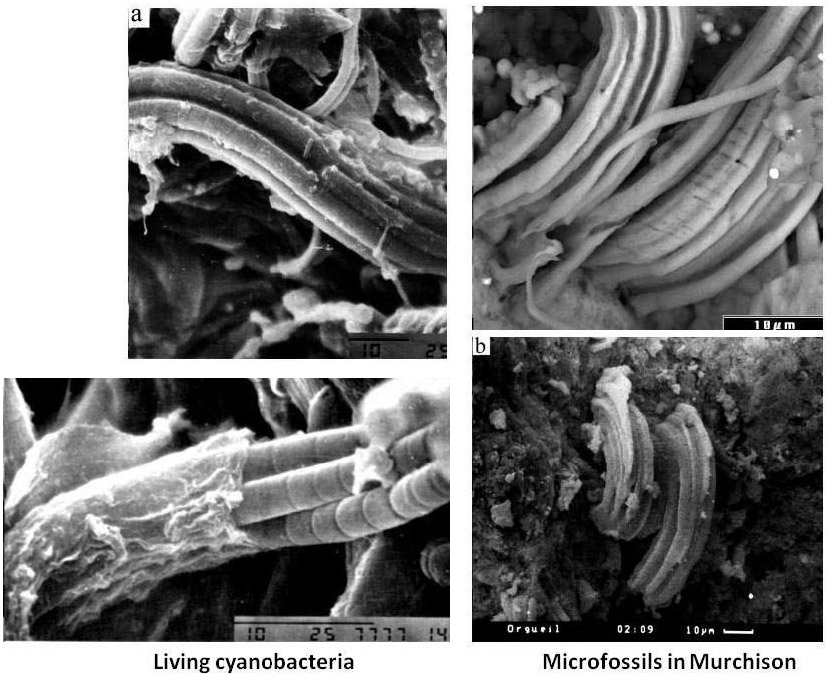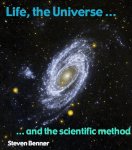 Have you ever wondered how Spock can have a
human mother and a Vulcan father? How all species in a Tatooine cantina eat the
same stuff? Why all aliens look like Hollywood actors with prostheses?
Have you ever wondered how Spock can have a human mother and a Vulcan father? How all species in a Tatooine cantina eat the same stuff? Why all aliens look like Hollywood actors with prostheses?
Yes, yes, I know: “Steven, what part of the
word ‘fiction’ don’t you understand?”
But for those into “the biology of Star Trek”,
the answer is clear. Because all life in the galaxy uses pretty much the same
biochemistry. Therefore, they all eat the same stuff, such as amino acids for
their proteins.
Most importantly, they all have DNA to do their
genetics. Which is why Leonard Read more [...]
Have you ever wondered how Spock can have a
human mother and a Vulcan father? How all species in a Tatooine cantina eat the
same stuff? Why all aliens look like Hollywood actors with prostheses?
Have you ever wondered how Spock can have a human mother and a Vulcan father? How all species in a Tatooine cantina eat the same stuff? Why all aliens look like Hollywood actors with prostheses?
Yes, yes, I know: “Steven, what part of the
word ‘fiction’ don’t you understand?”
But for those into “the biology of Star Trek”,
the answer is clear. Because all life in the galaxy uses pretty much the same
biochemistry. Therefore, they all eat the same stuff, such as amino acids for
their proteins.
Most importantly, they all have DNA to do their
genetics. Which is why Leonard Read more [...] The DNA of Alien Life
 Have you ever wondered how Spock can have a
human mother and a Vulcan father? How all species in a Tatooine cantina eat the
same stuff? Why all aliens look like Hollywood actors with prostheses?
Have you ever wondered how Spock can have a human mother and a Vulcan father? How all species in a Tatooine cantina eat the same stuff? Why all aliens look like Hollywood actors with prostheses?
Yes, yes, I know: “Steven, what part of the
word ‘fiction’ don’t you understand?”
But for those into “the biology of Star Trek”,
the answer is clear. Because all life in the galaxy uses pretty much the same
biochemistry. Therefore, they all eat the same stuff, such as amino acids for
their proteins.
Most importantly, they all have DNA to do their
genetics. Which is why Leonard Read more [...]
Have you ever wondered how Spock can have a
human mother and a Vulcan father? How all species in a Tatooine cantina eat the
same stuff? Why all aliens look like Hollywood actors with prostheses?
Have you ever wondered how Spock can have a human mother and a Vulcan father? How all species in a Tatooine cantina eat the same stuff? Why all aliens look like Hollywood actors with prostheses?
Yes, yes, I know: “Steven, what part of the
word ‘fiction’ don’t you understand?”
But for those into “the biology of Star Trek”,
the answer is clear. Because all life in the galaxy uses pretty much the same
biochemistry. Therefore, they all eat the same stuff, such as amino acids for
their proteins.
Most importantly, they all have DNA to do their
genetics. Which is why Leonard Read more [...] Stamp collecting, mineralogy and prebiotic chemistry
 Kernowite , from wikimedia commons
Ernest Rutherford is often cited as saying that science consists only of “physics and stamp collecting.” Geology collects minerals, biology collects species, and chemistry collects molecules. But only physics, in his view, generates mathematically formulated theories that have predictive and explanatory powers.
A great quote, although it is a bit demeaning to us chemists.
Just before Christmas last month, a team of stamp collectors (who call themselves geologists) from the Natural History Museum in London was puttering around Cornwall. They came across a new mineral. As its discoverer, Mike Rumsey and his team got to name it. Kernowite, since "Kernow" is how the Cornish language refer to Cornwall. Linguistics is another stamp collecting field. Read more [...]
Kernowite , from wikimedia commons
Ernest Rutherford is often cited as saying that science consists only of “physics and stamp collecting.” Geology collects minerals, biology collects species, and chemistry collects molecules. But only physics, in his view, generates mathematically formulated theories that have predictive and explanatory powers.
A great quote, although it is a bit demeaning to us chemists.
Just before Christmas last month, a team of stamp collectors (who call themselves geologists) from the Natural History Museum in London was puttering around Cornwall. They came across a new mineral. As its discoverer, Mike Rumsey and his team got to name it. Kernowite, since "Kernow" is how the Cornish language refer to Cornwall. Linguistics is another stamp collecting field. Read more [...] Aristotle and the search for life on Venus
 Last September, science blogs breathlessly reported (if a blog can be said to be breathless) the "discovery of life on Venus". Here was the lede from the European Association of Geochemistry:
“Scientists find gas linked to life in atmosphere of Venus”
As always, we parse the lede. The "gas" is phosphine (PH3), that is, three hydrogen atoms bonded to one phosphorus atom. The "find" was based on data collected from radio telescopes, manipulated to remove noise, and giving a signal proposed to arise from PH3. The "links to life" referred to some Earth organisms that make PH3, specifically, organisms that live in oxygen-scarce environments, which are overall "reducing", as we chemists say. "Reducing" does not mean that they are losing weight; rather that it means that the ratio Read more [...]
Last September, science blogs breathlessly reported (if a blog can be said to be breathless) the "discovery of life on Venus". Here was the lede from the European Association of Geochemistry:
“Scientists find gas linked to life in atmosphere of Venus”
As always, we parse the lede. The "gas" is phosphine (PH3), that is, three hydrogen atoms bonded to one phosphorus atom. The "find" was based on data collected from radio telescopes, manipulated to remove noise, and giving a signal proposed to arise from PH3. The "links to life" referred to some Earth organisms that make PH3, specifically, organisms that live in oxygen-scarce environments, which are overall "reducing", as we chemists say. "Reducing" does not mean that they are losing weight; rather that it means that the ratio Read more [...] Can life arise from mixtures of DNA and RNA? What do Quine and Duhem say?
 SciTechDaily last week picked up a press release reporting that work at The Scripps Research Institute (La Jolla) "boosts [a] theory that life on our planet arose from [a] RNA-DNA mix".
SciTechDaily last week picked up a press release reporting that work at The Scripps Research Institute (La Jolla) "boosts [a] theory that life on our planet arose from [a] RNA-DNA mix".
The work appeared in the journal Angewandte Chemie, arguably the top scientific journal in the world today focused on things chemical.
It was fine chemistry. But the conclusion was wrong … or at least it contradicts what we think is true about how biological information must be stored and transmitted in molecular form.
Just 28 words in that last sentence, and we are already "in deep epistemology". But that is what we do here. So let’s have a go.
Many scientists, having read the work of Karl Popper, think that a proposition is "scientific" if it can be "disproven".
However, as we often discuss, disproof is Read more [...]
Sometimes it helps to be rude
 As one of my many personality flaws, I often overlook social niceties as I engage in scientific discussions. I have never understood the value of niceties in an activity that supposedly concerns fact, logic, and reasoned arguments.
As one of my many personality flaws, I often overlook social niceties as I engage in scientific discussions. I have never understood the value of niceties in an activity that supposedly concerns fact, logic, and reasoned arguments.
Nor have I ever had problems separating an argument about science, versus an argument with my neighbor after, for example, his dog has messed up my pool deck. Scientific arguments are engaged as scientific arguments. Nothing else. And certainly not as a mechanism to establish a pecking order among scientists. So after a jolly fight, I have never had any difficulty conceding defeat. In fact, defeat is wonderful; it means that I have learned something.
But there is another reason to avoid niceties: One of the best ways to assess the intellectual integrity of a new Read more [...]
Can’t travel? Get some science done
The coronavirus forces me to be at home this holiday season. But since I cannot travel physically, perhaps I can traveling a bit back in time.
This is not humankind's first pandemic scare. In 2019, we worried about African swine flu. In 2015, Zika threatened to create widespread birth defects. In 2009, it was H1N1.
Nor is this the first coronavirus to worry us. In 2014, a patient with "Middle East Respiratory Syndrome" appeared in an Orlando hospital. Caused by a different coronavirus, it took six hours for the staff to guess what it was.
Nor is this my own first interaction with a coronavirus. In 2003, a different coronavirus emerged, this one from Hong Kong. It caused a disease called "severe acute respiratory syndrome", or SARS. My biotech company, EraGen Biosciences, developed a diagnostic Read more [...]
Perplexities in the COVID-19 pandemic suggest that several novel coronaviruses are circulating world-wide with different symptoms, transmissibilities, and geographical distributions
The recent pandemic of the disease COVID-19 is surrounded by numerous perplexities. These are apparent because, for the first time in history, technology is available to study, in "real time", the molecular biology of both the virus and human patients responding to it. Further, technology to enable both classes of study is sufficiently democratized that individual researchers can locally mitigate the disappointing response of the CDC molecular tests and the regulatory filter of the FDA.
One perplexity arises from the surprisingly large number of people that serology tests suggest have already been infected by the SARS-CoV-2 virus (also called 2019-nCoV), but who have not presented with COVID-19 symptoms. That number is 50-85 times "too large" in Santa Clara County [1]. This is too large Read more [...]
Can Craig Venter get Martian biology “at the speed of light”
Craig Venter was interviewed by Charlie Rose last week, repeating highlights from his recent book "Life at the Speed of Light". As one of these, Craig told Charlie that if we were just to send a DNA sequencing instrument to Mars, sequence the DNA of Martians living there, radio that sequence back to Earth, and synthesize the Martian DNA here, then we could have Martian life on Earth without needing to do the rocket science needed to actually send a physical specimen of Martian life from Mars back to Earth.
Radio waves travel, of course, at the speed of light. Hence: life at the speed of light.
No one is a bigger fan of Craig than I am. However, Craig would be a better synthetic biologist if his enormous imaginative powers included imagination within organic chemistry.
Basically, Craig Read more [...]
Alien Microbes in Comets? A Tempting Science
 In middle school, we learned that scientists accept conclusions when they are supported by evidence. Were it only so simple.
In middle school, we learned that scientists accept conclusions when they are supported by evidence. Were it only so simple.
Take Richard Hoover. Working at NASA in Alabama, Hoover sliced up a piece of a Murchison “carbonaceous chondrites”, a meteorite rich in tarry, carbon-rich material. Looking at the slices with an electron microscope, he saw features in the carbon-rich material that looked like bacteria and fungi.
These pictures were certainly evidence. Compare for yourself the images from the chondrites with electron micrographs of Earth bacteria and fungi. Both have round cell-like structures. Both have spirals, and other shapes familiar to microbiologist.
Both have filaments. They look like microbes.
Let that sink in for a moment. Bacteria. In a rock. From outer space.
Hoover Read more [...]
Be nice to geologists
Well, I have been taken to the woodshed by my many geologist friends for using the word "geologist" to describe those who use the Periodic Table to guide their expectations, which in turn are key to deciding whether or not a result is viewed as "extraordinary", in the Sagan sense.
My bad. And to think of it, more correct for such folks would be the word "chemist". After all, the Periodic Table is at the core of chemistry. Further, those whose work in geology departments centers on the Table might call themselves "geochemists", to distinguish themselves from those whose work centers on hiking landscapes to plot strata.
Now, anyone who finds the string c-h-e-m-i-s-t somewhere in their CV does not a priori find it absurd to propose that an element below another element in the Table might substitute Read more [...]

